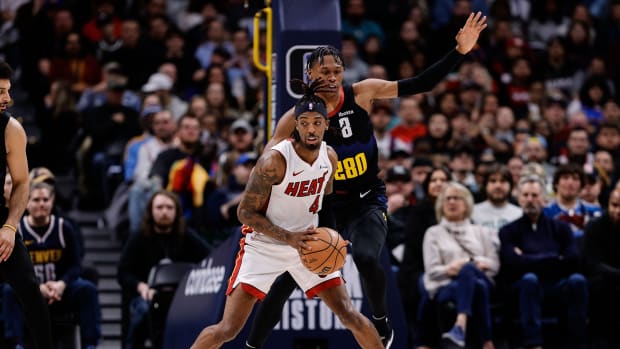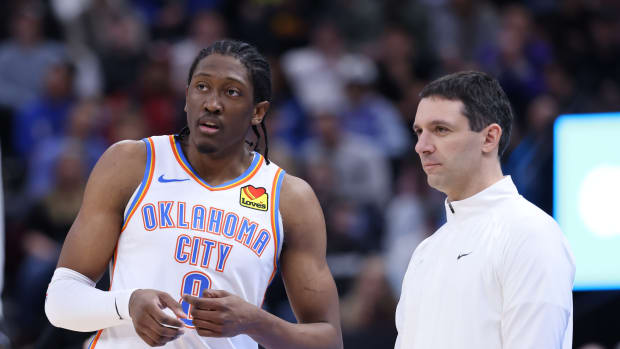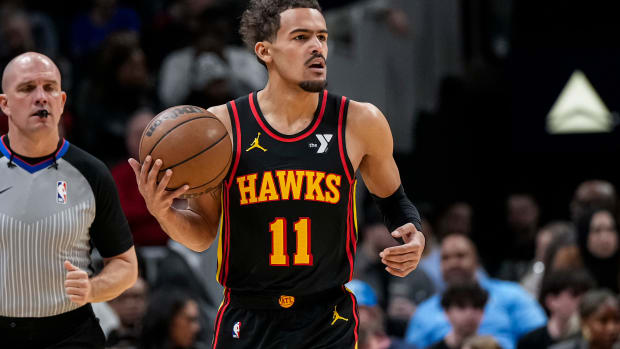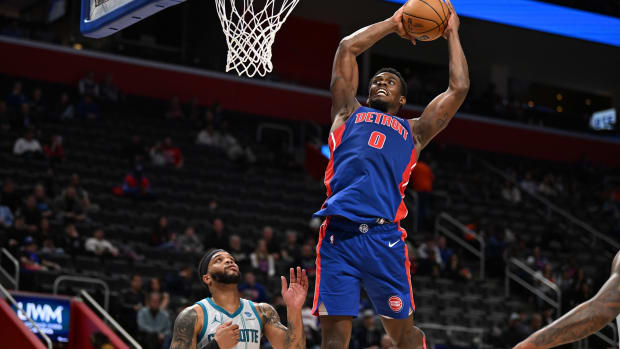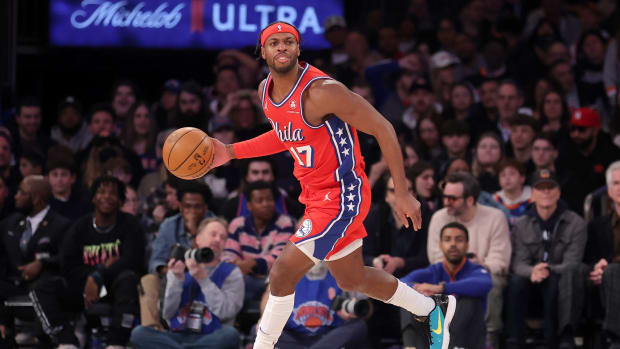The Spurs Are Changing Their Fortune—One Stop at a Time
Just over a month ago, the Spurs were losers of four of their last five games, owners of the second-worst record in the Western Conference, and staring down the possibility of the first losing season in San Antonio since 1997. Today, they’re in prime playoff position—a slotted sixth seed just a half-game removed in the standings from hosting a postseason series of their own.
Fortunes in the West can change just that quickly. A rough week could lead to the kind of tumble in the standings that eventually gets a coach fired. A few more wins could buy a growing core more time. Those who believe that the regular season does not matter should mind the violent swings that come from even a single night of games, every one imbued with incredible consequence. The difference, for a team like San Antonio, could come down to whether they took care of business on an otherwise inconspicuous night in mid-January.
MANNIX: Courting Kawhi: Can the Raptors Sell Their Star on Toronto?
This is, historically, where the Spurs have thrived. If every year they seem to outperform expectations, that’s because every year they’ve managed to sneak in a few extra wins solely on the grounds of execution. Well prepared teams cast a tall shadow. Gregg Popovich and his staff have used that to their advantage, for years forcing road-weary opponents in the thick of the season to earn every possession. It took this iteration of the Spurs a few months to reach that point, but it seems they’ve finally arrived at the franchise standard.
Reaching that point required some trial and error. Dejounte Murray’s torn ACL threw the lineup in flux before the season ever began, forcing the Spurs to compensate at an already shallow position. Getting Derrick White—a useful playmaker who can hold his own on defense—back into the lineup has helped to stabilize things, as has the growing competence of Bryn Forbes. The rotation has changed gradually since those early losses, largely at the expense of former starter Dante Cunningham. It wasn’t entirely Cunningham’s fault that the Spurs floundered through October and November, though it’s telling that for the entire season to date, he is the only player on the roster whose presence has been a significant net negative, according to data from NBA.com. Slashing his minutes and redistributing them has made way for better, more balanced lineups, through which the Spurs have begun to look like themselves.
Even those first few months may have aged Popovich by decades. San Antonio’s defense was especially vexing; a largely veteran group competed with Cleveland for the single worst defensive rating in the league, bleeding more points than a mid-range-oriented offense could ever hope to make up. It’s at times like those that the Spurs’ rather extreme (and almost systematic) rejection of three-point shooting comes at its greatest cost. Lesser teams win games all the time by riding the wave of variability. San Antonio had built a solid offense—top 10 in the league, even then—without the same reach. Impressive as it was that a group without its starting point guard could make its way to such consistent scores, the Spurs managed to give up so many points at that stage into the season as to blot out most of the good that came with them.
The balance of San Antonio’s season shifted when its defense did. Praise is due to DeMar DeRozan and LaMarcus Aldridge, without whom a successful season could not be possible. Those two have managed a stable, low-turnover attack that holds up deep into the shot clock. The way the Spurs play may not be terribly modern, but it works within a certain analog sensibility. Good things can happen for teams that play within themselves and minimize their errors—so long as their defense follows suit. That it took this long makes sense, considering where the Spurs came from.
NBA Power Rankings: DeMar DeRozan, Spurs Crack the Top 10
Last year’s team was outstanding in coverage, even as they waited, and waited, and waited for a Kawhi Leonard return that never came. For that roster to rank as one of the best defenses in the league required a bit of magic, or at least some sleight of hand. Absent Leonard, there was no first-class defensive centerpiece on the roster. Pau Gasol—whose dwindling foot speed makes him an easy target in the pick-and-roll—was both a regular starter and fourth on the team in minutes played. (Gasol, it should be noted, has not been a part of the rotation for the Spurs since returning from a foot injury.) There were good, proven defenders in the mix, but none so convincing as to suggest the Spurs would stall opponents as effectively as they did.
Familiarity made it possible. Aldridge may not be an all-league defender, but he knew how to play off of Danny Green and Kyle Anderson. Lineups were so in-step with the rhythms and sequencing of the offense that they could survive three or four consecutive rotations. Trading away Green and Leonard—and replacing them with DeRozan, who is not only a lesser defender but a very different one—would inevitably cost the Spurs some of their sorcery. It didn’t mean they couldn’t use new ingredients to find it again.
Any changes to scheme in San Antonio have been relatively minor. Their climb—from the second-worst shot defense in the league on Dec. 5 to the best in the league since—comes from striking the right balance. The Spurs’ dedication to protect the paint has not wavered, nor has the conservative pick-and-roll coverage in service of that end. Change comes in the margins. There is a clearer understanding of how long a helping defender should stay in place before recovering, down to the microsecond. Recovery angles are better managed, down to the degree. Even without changing their fundamental style, the Spurs are covering more ground and challenging more shots—threes, in particular. What can be the most challenging aspect of pro-level basketball is starting to look natural. Intuitive.
Defenses operating at that level can preempt issues rather than respond to them. The precision required can be a delicate (and often fleeting) thing. Coincidentally, San Antonio’s run of 13 wins in 16 games points back to a six-game homestand, one of the first opportunities of the season for meaningful practice time.
That could very well be a coincidence. Or it could be a suggestion of what clarity that sort of tune-up can bring to a team in the process of getting better acquainted.































